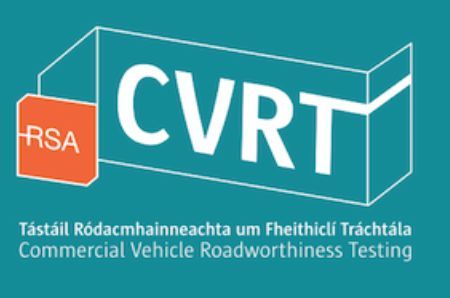Vehicle standards for buses
Types of buses and your obligations to maintain safety standards as a bus operator.
Buses are vehicles which are designed and constructed for the carriage of more than eight passengers in addition to the driver.
This content is for general information only. It does not, and is not intended to, provide legal or technical advice or to represent a legal interpretation of the matters it addresses.There are two categories of bus
/mini-bus.jpg?sfvrsn=5b486e1a_0)
M2 - Bus
A small bus which can carry more than eight passengers in addition to the driver and has a maximum mass not exceeding five tonnes.
/bus25d3f2ac980c42afbd4e1c4c14cb12b4.jpg?sfvrsn=a1dfb0b7_0)
M3 - Bus
A large bus which can carry more than eight passengers in addition to the driver and has a maximum mass exceeding five tonnes.
Buying a used bus
If you’re considering buying a used bus, you should visit purchasing a used commercial vehicle for advice.
You will also find more information about vehicle safety features here.
Maintaining and repairing your bus
As the owner or operator of a bus, it's very important to always keep your vehicle in a roadworthy condition.
All bus operators must ensure buses are roadworthy. They must:
- Have in place regular and good quality preventative maintenance systems
- Conduct daily walkaround checks
- Swiftly repair defects
- Ensure buses are tested on time
- Complete an annual self-declaration with the Road Safety Authority.
Aside from the road safety benefits and it being your legal obligation, well maintained buses reduce the likelihood of your bus encountering delays from unscheduled downtime, unsafe buses being impounded and additional delays at roadside inspections.
You can find out more on the CVRT vehicle maintenance and repairs website.
Walkaround checks
Our Daily Walkaround Checks webpage highlights the importance and benefits of daily walkaround checks and your obligations as a bus driver.Driving for work
Driving for work involves a risk not only for the driver, but also for fellow workers and members of the public, such as pedestrians and other road users.
Our Driving For Work website offers advice on helping make driving for work safer for everyone.
You can also find more information from CVRT on how the proper maintenance of your bus and regular walkaround checks makes driving for work safer.
Other useful links and information
/bus-hire.jpg)
Hiring a bus
If you’re hiring a bus, you must make sure it is safe for you and your passengers. You can find out more information from CVRT.
/row-of-buses.jpg)
Public service vehicle (PSV) permit
There are times when a public service vehicle may not fully meet Irish road traffic regulations e.g. emergency door layout. Find out more on this here.

Bus roadworthiness testing
Find out why your vehicle needs a CVR test and how to book one.
/vehicle-lighting-car.jpg)
Vehicle components
Find out more information about vehicle components including seatbelts, tyres, lighting, windscreen and glazing.
/legislation.jpg)
Vehicle legislation
Get answers to questions on vehicle legislation
/modified_bus.jpg)
Vehicle modifications
Advice and information on converting or modifying a vehicle
/motorhome.jpg)
Weights and dimensions
We have published guidelines for the weights and dimensions of vehicles in use on Irish roads.
Frequently Asked Questions
Buses
If you have any concerns about the condition of a bus, email commercial vehicle enforcement section at [email protected]. School buses are required to be roadworthiness tested every year and meet a number of compliance requirements. Under road traffic law, it is ultimately the responsibility of the bus operator to ensure that the vehicle being used is safe, roadworthy, and properly maintained at all times when in use. Failure to do so can result in prosecution.
S.I. No. 192 of 2017 of Road Traffic (Large Public Service Vehicles) (Licencing) Regulations 2017 are now effective which means that where a vehicle has been granted type approval, such vehicles are deemed to have met the criteria to qualify for a LPSV licence from An Garda Síochána. For further information see Section 6.1.3 of HCV Manual.
Yes. It is the legal responsibility of the owner and driver of a vehicle or combination of vehicles to ensure that when it is used in a public place, it is in such a condition that it is not liable to endanger other road users. Enforcement of road traffic regulations is a matter for the Gardaí.
We do not specify the contents of first aid kits for vehicles. For more information, see the HSA document Guidelines on First Aid at Places of Work 2008.
No. A standee permit allows for an exemption from this provision. In order to gain exemption, you will need to apply for a standee permit. However, there is a requirement for an omnibus travelling on a scheduled route of 15 miles or more to carry a first aid kit.
Yes, however they are speed limited to 65 km/h.
Yes.
From a type approval perspective, standards for buses are set out in Regulation (EU) 2019/2144 – General Safety Regulations. Annex I sets out the relevant UNECE Regulation number 107 (Category M2 & M3) which has various series of amendments.
Once vehicles are in service, they must adhere to the requirements set out under S.I. No.190 of 1963 of the Road Traffic Construction, Equipment & Use of Vehicles Regulations.